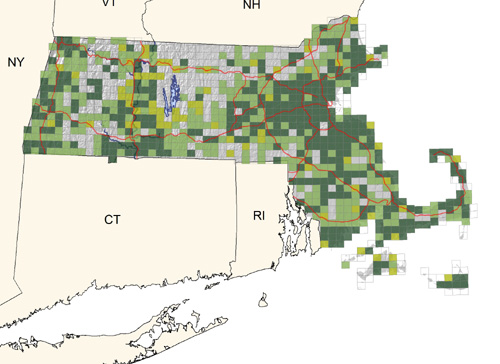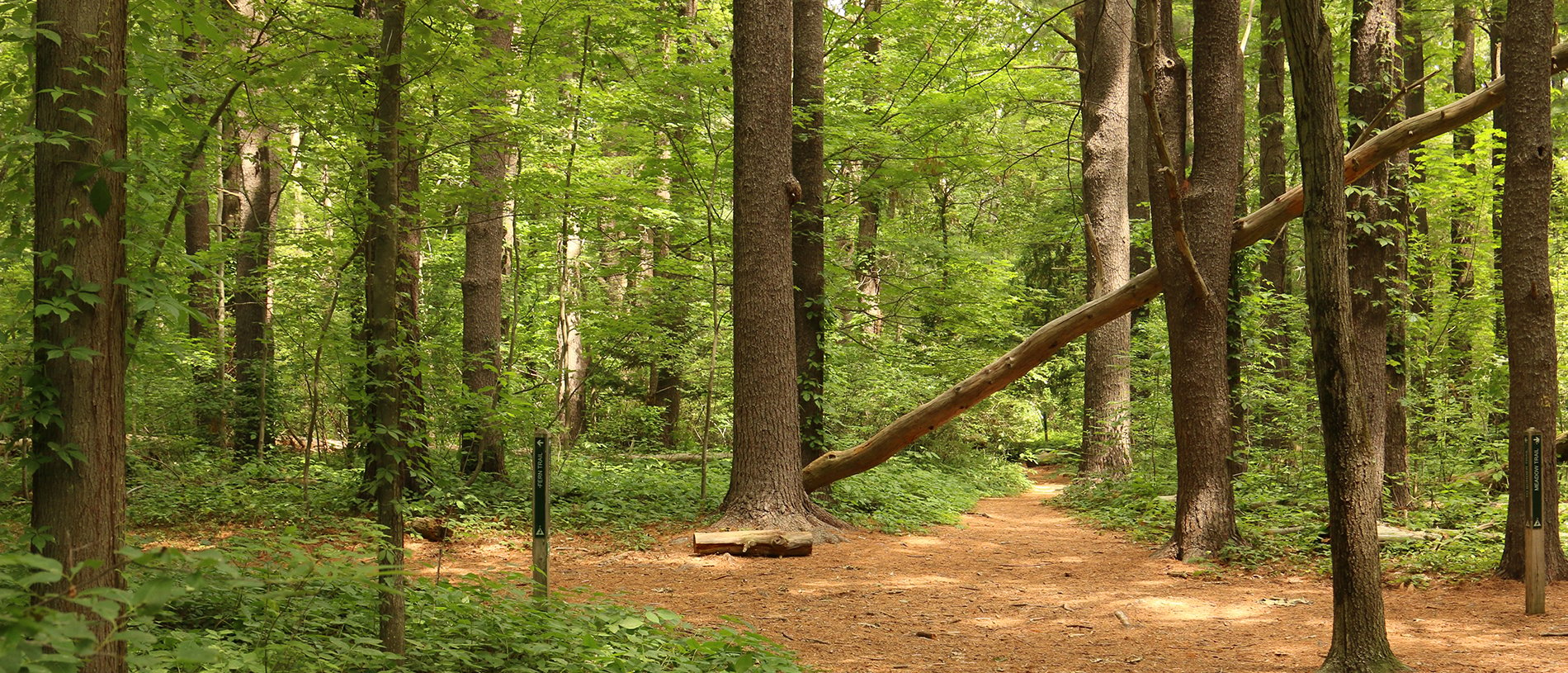Breeding Bird Atlases (BBA)
Find a Bird - BBA1
Breeding Bird Atlas 1 Species Accounts
Northern Cardinal
Cardinalis cardinalis
Egg Dates
April 14 to August 8
Number of Broods
two; possibly sometimes three

During recent decades, the Northern Cardinal has increased its range dramatically in New England, and today it is a common permanent resident in Massachusetts. In 1929 Forbush described this species as a “rare visitor” and mentioned one nesting record in Brookline in 1898. By 1955 Griscom reported the bird to be “pushing northward” and to be recorded annually at feeding stations. National Audubon Christmas Bird Count data shows clearly that the Northern Cardinal population has grown increasingly rapidly and that the spread into New England correlates with that of other species such as the Tufted Titmouse and Northern Mockingbird. This increase has been most pronounced since 1960, and the numbers continue to rise.
During the Atlas period, cardinals were confirmed to be nesting statewide. The species was most abundant in eastern Massachusetts and was scarce or lacking in the wooded uplands, particularly in north-central sections. The cardinal is found in a wide variety of habitats where dense cover is interspersed with relatively open areas. It is particularly common along woodland edges, brushy old fields, and wooded wetlands, and has also adapted to parks and suburban areas. Cardinals are attracted readily to feeding stations that offer sunflower seed. Indeed, winter bird feeding may be in part responsible for the northward spread of the bird.
Cardinals are basically nonmigratory, but individuals, especially the young, may disperse widely. Pair bonds are thought to be permanent, and the birds generally remain in the same home range throughout the year. During the breeding season, they are highly territorial, and both the male and female sing. The song is a loud, melodious, whistled what-cheer, cheer, cheer, or sweet, sweet, sweet. The call note is a sharp chink. The song can be heard at any time of year, but it is much more frequent from March through the nesting season. During courtship, the male may feed the female.
Habitats for 27 Massachusetts nests were suburban (19 nests), wooded (4 nests), swamp (2 nests), field (1 nest), rural yard (1 nest) (CNR). The nest is constructed of twigs, grass, and plant fibers. Females do most of the nest building and incubation. Nests are built in thick shrubs, dense trees, or tangles of vines. Twenty-five state nests were located as follows: unspecified bushes or shrubs (4 nests); grape and other vines (5 nests); spruce, including Norway Spruce (2 nests); Arbor Vitae (2 nests); and 1 nest each in hydrangea, Bog Rosemary, wisteria, privet, Red Cedar, rhododendron, honeysuckle, barberry, viburnum, holly, Eastern Hemlock, and rose (CNR). Heights for 23 of these nests ranged from 3 feet to 15 feet, with an average of 7 feet (CNR).
Clutch sizes vary from two to five (typically three or four) eggs and for 12 Massachusetts nests were one egg (probably incomplete, 2 nests), two eggs (5 nests), three eggs (4 nests), four eggs (1 nest) (CNR). Eggs are whitish with dark brown and gray blotches. Males feed females on the nest and help feed the young, which hatch after an incubation period of 12 to 13 days. Nestlings have been reported in Massachusetts from April 29 to July 15. Brood sizes for 14 state nests were one young (2 nests), two young (3 nests), three young (8 nests), four young (1 nest) (CNR). Known state hatch dates were May 11, June 20 and 25, and July 4 (CNR).
Young generally fledge at 9 to 11 days of age. Fledglings have been recorded in the state from May 4 to September 12, with the young on the latter date newly fledged. Known state fledge dates were May 13 and 20, June 3 and 29, and July 14 (CNR). Outcomes for 24 state nests were unknown (5 nests), failed (9 nests), fledged young (10 nests) (CNR). Two broods (possibly sometimes three) are usually produced each summer, and the young tend to remain with the parents for some time.
The male will care for the fledglings while the female initiates a new nesting. There are records of cowbird parasitism in our area; e.g., a nest in South Hadley contained a young cowbird on May 7 (CNR). Juvenile cardinals have dark bills while the adults have red bills. Young of both sexes initially resemble the adult female, but young males assume a brighter plumage before winter. Adults molt at the end of the breeding season. The Northern Cardinal is among the first bird species to be active at daybreak and among the last to roost at dusk, a fact to which feeding-station operators can attest.
Map Legend and Data Summary
Atlas 1 data collected from 1975-1979


Note: common in thickets and residential areas throughout the state; absent in extensive woodlands
John C. Kricher



